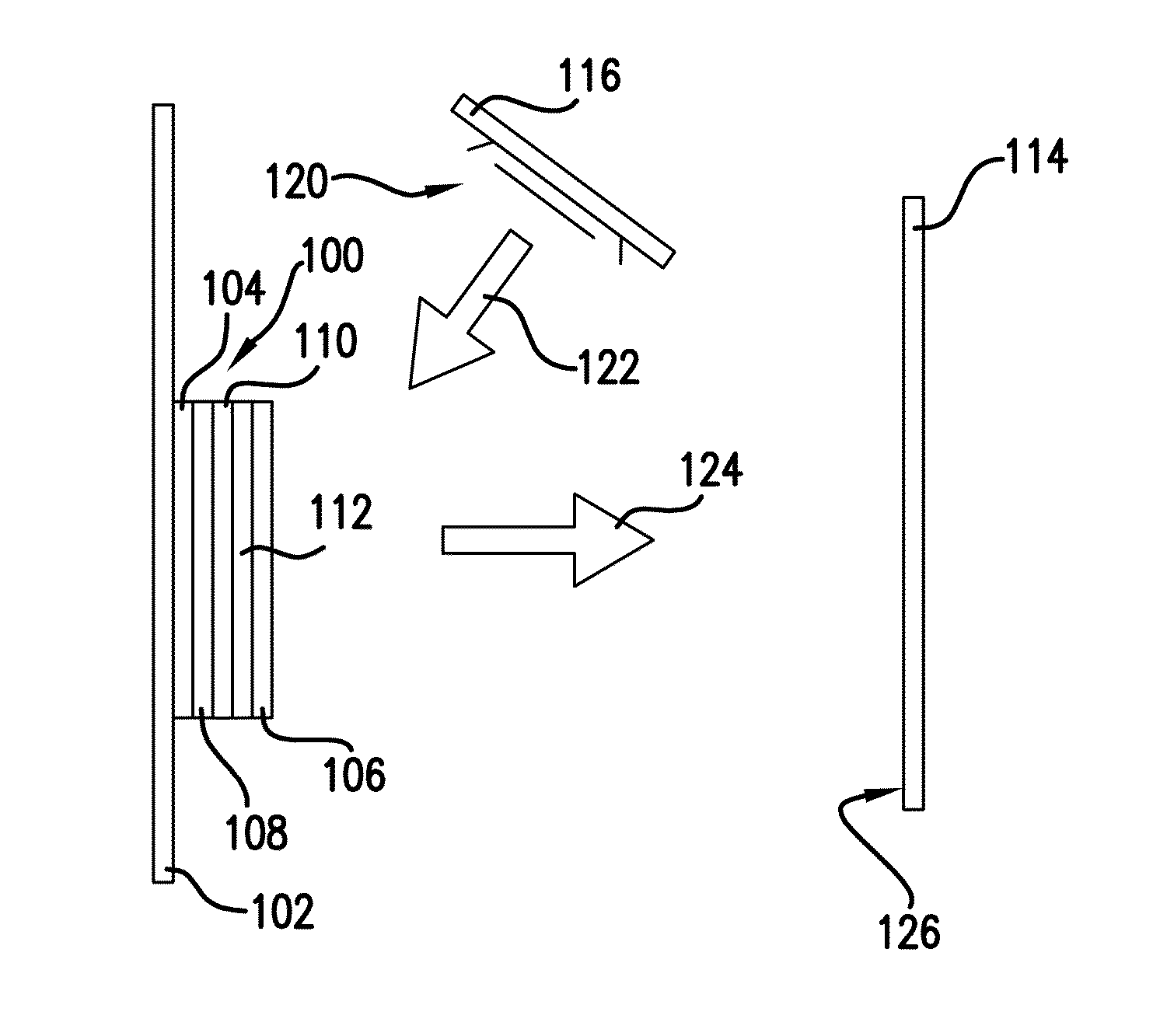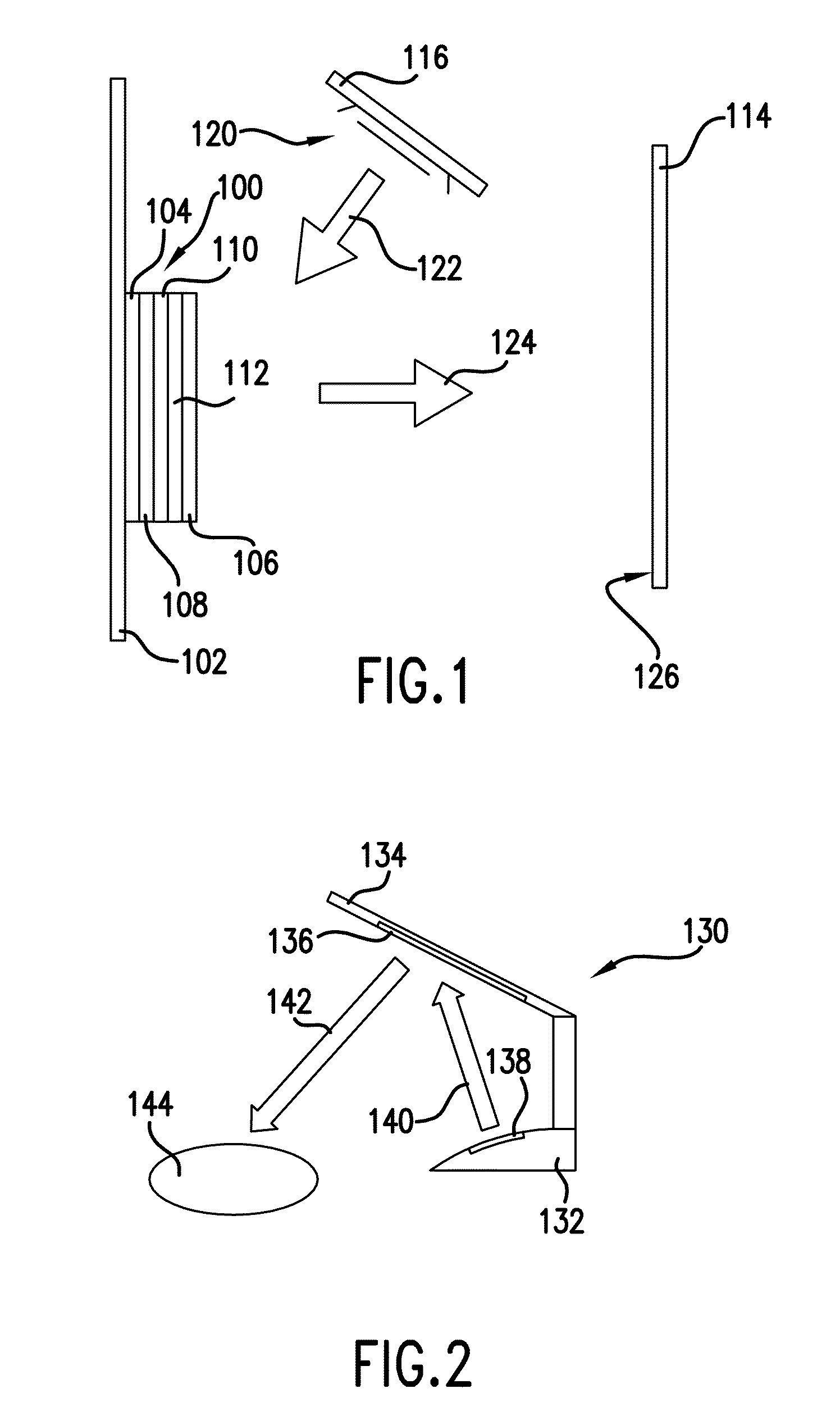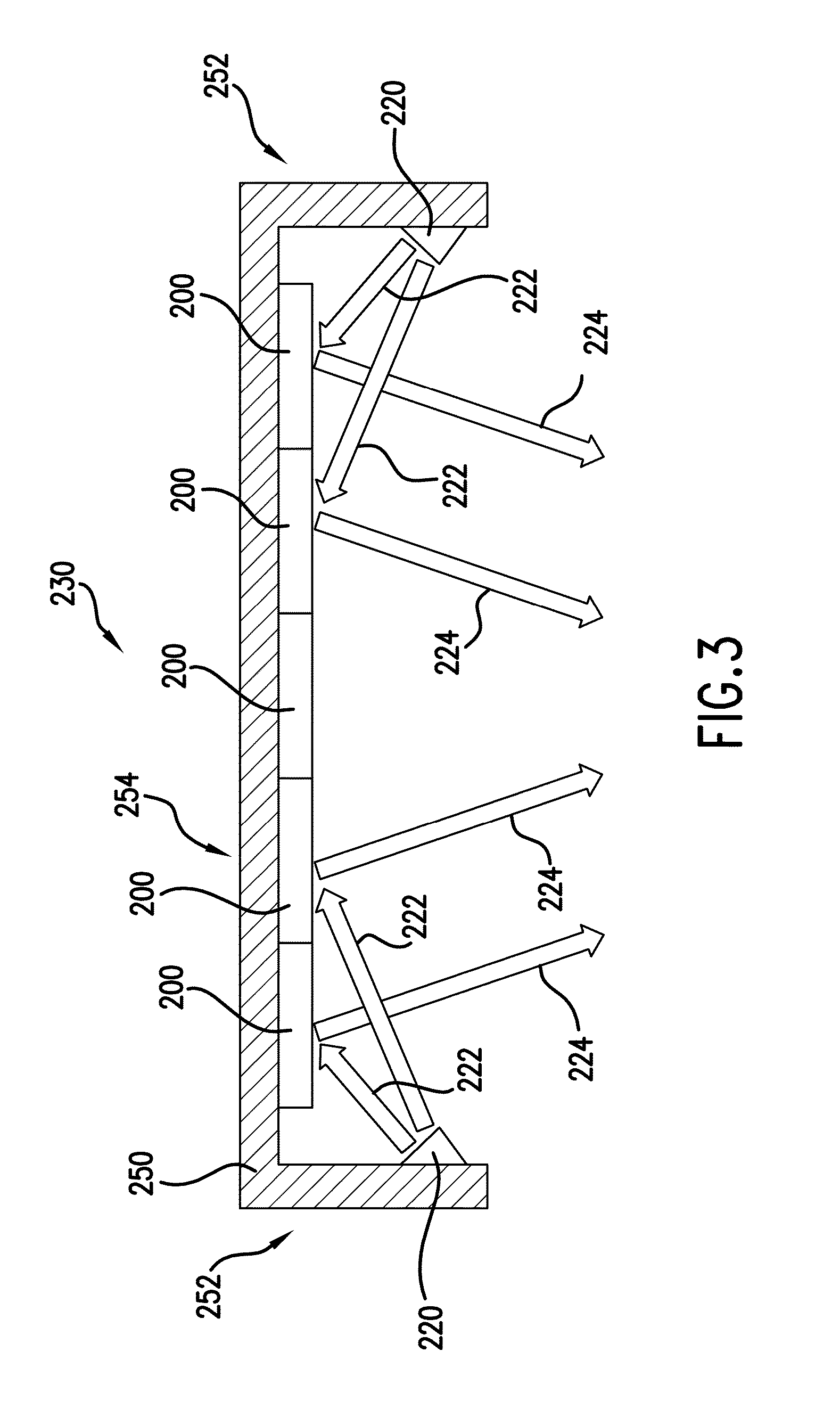Color mixing using the reflective properties of oleds
a technology of reflective properties and oleds, applied in the field of color mixing using the reflective properties of oleds, can solve the problems of non-radiative mechanisms, difficult manufacturing of oleds, and certain challenges, and achieve the effect of effective tuning the color of the combined light emitted
- Summary
- Abstract
- Description
- Claims
- Application Information
AI Technical Summary
Benefits of technology
Problems solved by technology
Method used
Image
Examples
example
[0043]A first white OLED was positioned 27 cm from a white surface and operated with a 50 mA drive current while directed toward the white surface. A second blue OLED was positioned 10 cm away from the first white OLED and directed so as to illuminate the first white OLED and reflect off of the first white OLED towards the white surface. A Radiant Imaging camera was positioned normal to the white surface. Table I shows the measurement results with only the first white OLED activated while Table II shows the results with both OLEDs activated to provide a combined light directed towards the white surface.
TABLE ILuminanceCCT(cd / m2)ccxccy(K)7.890.4160.4293562
TABLE IILuminanceCCT(cd / m2)ccxccy(K)9.790.3530.4154927
[0044]As indicated by the results, the light incident on the white surface is well mixed with a resulting shift in color coordinates—indicating that light from the second blue OLED has reflected off the first white OLED and mixed with light from the first white OLED to provide a ...
PUM
 Login to View More
Login to View More Abstract
Description
Claims
Application Information
 Login to View More
Login to View More - R&D
- Intellectual Property
- Life Sciences
- Materials
- Tech Scout
- Unparalleled Data Quality
- Higher Quality Content
- 60% Fewer Hallucinations
Browse by: Latest US Patents, China's latest patents, Technical Efficacy Thesaurus, Application Domain, Technology Topic, Popular Technical Reports.
© 2025 PatSnap. All rights reserved.Legal|Privacy policy|Modern Slavery Act Transparency Statement|Sitemap|About US| Contact US: help@patsnap.com



